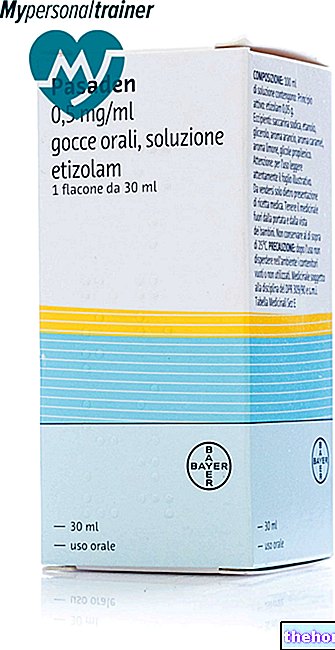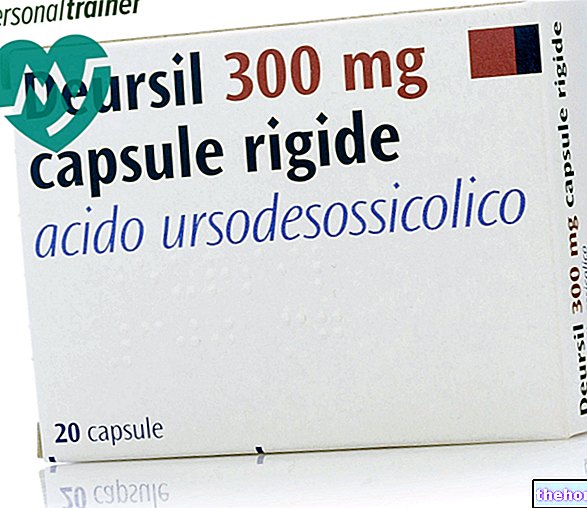Active ingredients: Cystine
CISTIDIL 500 mg tablets - 30 tablets
Why is Cistidil used? What is it for?
PHARMACOTHERAPEUTIC CATEGORY:
Amino acid for dermatological treatment.
THERAPEUTIC INDICATIONS:
adjuvant in the treatment of acne, atrophic dermatitis and psoriasis.
Contraindications When Cistidil should not be used
Cystinuria with kidney stones and hypersensitivity to the active substance or to any of the excipients.
Precautions for use What you need to know before taking Cistidil
At therapeutic doses there are no particular precautions for use.
Interactions Which drugs or foods can modify the effect of Cistidil
None known.
Warnings It is important to know that:
The use in pregnancy takes place according to the doctor's prescription. The cystine contained in CISTIDIL has no teratogenic effect.
Dose, Method and Time of Administration How to use Cistidil: Posology
2-4 tablets per day during meals for 2 or 3 monthly cycles. CISTIDIL tablets can be swallowed whole or broken, preferably during meals, or chewed by subjects with particular gastric sensitivity.
Overdose What to do if you have taken too much Cistidil
Overdose syndromes have never been reported.
Side Effects What are the side effects of Cistidil
At the indicated dosages, no undesirable effects were found. Compliance with the instructions contained in the package leaflet reduces the risk of undesirable effects.
Notify your doctor or pharmacist of any undesirable effects not described in this leaflet.
Expiry and Retention
Expiry: see the expiry date indicated on the package. The validity period is intended for the product in intact packaging, correctly stored.
WARNING: do not use the medicine after the expiry date indicated on the package.
STORAGE: store at a temperature not exceeding 25 ° C.
KEEP THE MEDICINAL PRODUCT OUT OF THE REACH OF CHILDREN.
Composition and pharmaceutical form
COMPOSITION:
Each tablet contains:
Active ingredient: 500 mg levorotatory cystine
Excipients: Rice starch, Lactose, Polyethylene glycol 6000, Carboxymethyl starch sodium salt, Magnesium stearate
PHARMACEUTICAL FORM and CONTENT:
30 tablets for oral use.
Source Package Leaflet: AIFA (Italian Medicines Agency). Content published in January 2016. The information present may not be up-to-date.
To have access to the most up-to-date version, it is advisable to access the AIFA (Italian Medicines Agency) website. Disclaimer and useful information.
01.0 NAME OF THE MEDICINAL PRODUCT
CYSTIDIL
02.0 QUALITATIVE AND QUANTITATIVE COMPOSITION
Each tablet contains:
Active ingredient: Levo-cystine 500,000 mg
Excipients: rice starch FU VIII 85.00 mg; lactose FU VIII 25.00 mg; polyethylene glycol 6000 FU VIII 20.00 mg; carboxymethyl starch sodium salt USP 15.00 mg; magnesium stearate FU VIII 5.00 mg.
03.0 PHARMACEUTICAL FORM
Tablets.
04.0 CLINICAL INFORMATION
04.1 Therapeutic indications
As an adjuvant in the treatment of acne, atrophic dermatitis and psoriasis.
04.2 Posology and method of administration
2 to 4 tablets orally during meals for 2 or 3 monthly cycles. The tablets can be swallowed whole or broken; better if during meals, or chewed by subjects with particular gastric sensitivity.
04.3 Contraindications
Cystinuria with kidney stones, ascertained individual sensitivity to the components.
04.4 Special warnings and appropriate precautions for use
None.
Warnings
None.
04.5 Interactions with other medicinal products and other forms of interaction
No interaction.
04.6 Pregnancy and lactation
Cystine has no teratogenic effect.
04.7 Effects on ability to drive and use machines
Nobody.
04.8 Undesirable effects
Taking Cistidil has no unwanted side effects.
04.9 Overdose
(Symptoms, emergency help, antidotes): as described in the toxicological section, overdose does not constitute a reason for toxicity because intestinal absorption, being active, limits its dosage.
We remind you that cystine has a detoxifying and protective action against mild liver disease and nephropathy. Even the involuntary or voluntary intake of the entire contents of a pack (30 x 500 mg = 15 g) is much lower than the toxic dose / kg in the rat and the lethal dose in the dog.
05.0 PHARMACOLOGICAL PROPERTIES
Levorotatory cystine is rapidly absorbed from the intestine with active transport. It is found in the portal blood shortly after oral administration. The main metabolic pathway for the breakdown of cystine is its transformation in the liver and kidney into taurine which is found both in the free state and in the urine, and combined with cholic acids in bile acids. Levorotatory cystine is an amino acid that becomes part of the biological proteins of numerous tissues and organs: brain 2.1% g, liver, heart and kidney, various hormones of the posterior lobe of the pituitary gland (vasopressin g 19%, oxytocin g 18 , 3%), enzymes (pepsin), plasma proteins, hard alpha keratins (nails 22% g, human hair 14 g 19%).
Cystine is the fundamental and elective constituent of the appendages, that is, of the structures rich in keratin: nails, hair and hair. Disulfide bridges are the ones primarily responsible for hard keratin resistance. The primary and decisive physiological action of cystine is to promote the keratinization process. Some authors have observed that in undernourished subjects (as in Kwashiorkor) the hair is lighter and contains less cystine; the return to rational nutrition determines the normalization of the cystine rate and the appearance of dark hair (Bigwood and Robazza, Rao and Gopalan, Close). Lightbody and Lewis highlighted a direct relationship between the amount of cystine contained in the diet and hair growth. The main lesion caused by cystine deficiency is the loss of human hair. Studies on animals have shown that cystine favors the anabolic processes of the hair (ànagen). The pharmacological properties of left-handed cystine are due to the presence of the disulfide bridge -SS- which is the basis of its physiological actions. Of particular importance is the presence of cystine in the insulin consisting of two polypeptide chains joined together by two -SS bonds. - of cystine. The reduction of the -SS- to SH bonds determines a loss of hormone activity; therefore the -SS- groups of cystine are essential for the action of insulin whose amino acid content is 8 g -13% (Wassel). Clinically, cystine is characterized by a hypoglycemic action in diabetics. Furthermore, cystine causes a lowering of cholesterol in hypercholesterolemic patients (cholesterol is removed from the body through the excretion of bile acids; taurine plays an important role in this mechanism cystine catabolite; in case of cystine deficiency less taurine is formed). The -SS- groups of cystine play an important role in maintaining the molecular structure of immunoglobulins (Edelmann).
Cystine is endowed with an "excellent tolerability and very modest systemic toxicity. The animals treated with a daily dose for 90 days with a dosage equal to the highest dose indicated per kg for human therapy, did not show any disturbance or alterations of the main haematochemical parameters or anatomopathological or histological lesions. Furthermore, the LD50, which could not be determined, was certainly higher than 40 g / kg in rats and mice and 4 g / kg in dogs. These doses are to be considered about 10 and 100 times higher than the maximum pro / kg / pro / day doses for humans.
05.1 Pharmacodynamic properties
-----
05.2 Pharmacokinetic properties
-----
05.3 Preclinical safety data
-----
06.0 PHARMACEUTICAL INFORMATION
06.1 Excipients
-----
06.2 Incompatibility
None.
06.3 Period of validity
In intact packaging: 36 months.
06.4 Special precautions for storage
None.
06.5 Nature of the immediate packaging and contents of the package
Cistidil is packaged in blisters.
One pack is 30 tablets
06.6 Instructions for use and handling
-----
07.0 MARKETING AUTHORIZATION HOLDER
IDI FARMACEUTICI S.p.A.
Via dei Castelli Romani, 83/85 - Pomezia (RM)
08.0 MARKETING AUTHORIZATION NUMBER
AIC n. 025733015 of the Min. San.- September 1985.
09.0 DATE OF FIRST AUTHORIZATION OR RENEWAL OF THE AUTHORIZATION
-----
10.0 DATE OF REVISION OF THE TEXT
-----























-nelle-carni-di-maiale.jpg)




